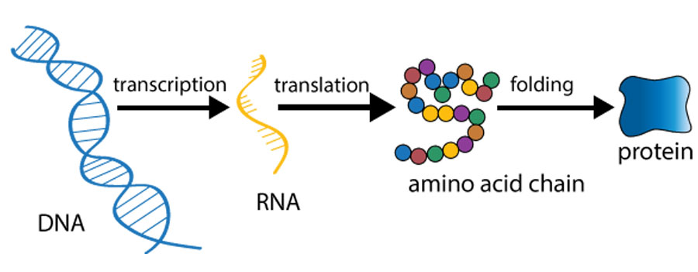Gene expression is a key concept in biology. Basically, our DNA contains genes which provide the instructions for making proteins (the molecules responsible for carrying out the actual functions of our cells). RNA serves as an intermediary in this process. Messenger RNA (mRNA) takes the instructions encoded in our DNA and converts them into actual functioning proteins in our bodies. The regulation of gene expression is complex and many different molecules are involved.

MicroRNAs (miRNA) are short RNA molecules that are involved in the regulation of gene expression. These small pieces of RNA actually bind to mRNAs and block them from making proteins. MicroRNAs have been shown to play a role in the regulation of cancers such as chronic lymphocytic leukemia (CLL).
At the International Workshop on CLL (iwCLL) 2019, our own Dr. Brian Koffman interviewed Dr. Carlo Croce, a professor of molecular biology and cancer genetics at The Ohio State University. They discussed the oncogene BCL2, microRNA, and their role in CLL.
Takeaways:
- BCL2 is an important gene that plays a role in whether cells live or die by regulating a cell death pathway known as apoptosis. This gene was originally identified by Dr. Croce’s lab in 1984 in patients with follicular lymphoma.
- BCL2 is a major driver of CLL, and it is highly overexpressed (meaning that there are more BCL2 proteins than normal) in over 80% of CLL cases.
- Overexpression of BCL2 inhibits apoptosis (a pathway for getting rid of unneeded or abnormal cells).
- In CLL, the most common genetic alteration is deletion of the long arm of chromosome 13 (del13q).
- In 2002, Dr. Croce’s lab discovered that this deletion also results in the deletion of two microRNAs which are located close together on chromosome 13.
- These two microRNAs (mir-15/16) downregulate BCL2 expression, thus when they are lost BCL2 is overexpressed.
- In general, microRNAs are not used directly as drugs due to challenges with delivering them to all cancer cells.
- In 2015, venetoclax became the first selective BCL2 inhibitor to receive FDA approval. When CLL cells are treated with venetoclax, they die very rapidly in most patients.
Conclusions:
It took over 30 years from the discovery of the BCL2 oncogene to development and approval of a targeted drug for treating CLL. Advances in science have allowed for researchers to identify specific genes and proteins that contribute to the growth and spread of cancer cells. From this, scientists have tried to develop targeted therapies which block the action of specific enzymes, proteins, or other molecules involved in cancer development. We have been fortunate that some of these discoveries have yielded targeted therapies, such as venetoclax, which have revolutionized the treatment of CLL.
Please enjoy this interview with Dr. Croce from September 2019 at iwCLL in Edinburgh, Scotland. Due to technical difficulties, there are only stills and no video.
Take care of yourself first.
Ann Liu, PhD

















